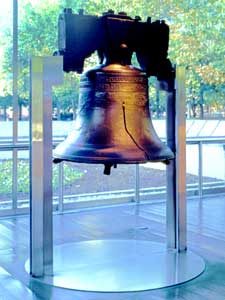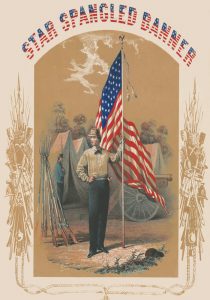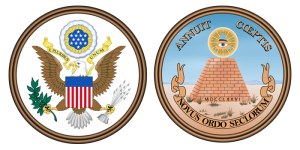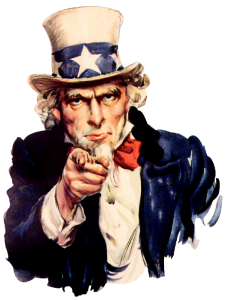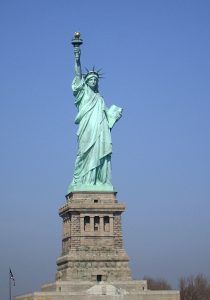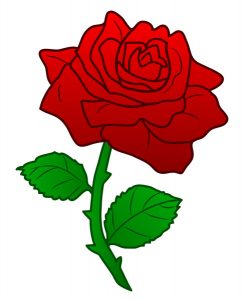
The United States, like every nation, has its symbols — specific objects that represent beliefs, values, traditions, or other intangible ideas that make it unique. These symbols can help to bind a nation together by reminding its people of their nation’s history and most important principles.
The United States has several symbols that represent these principles
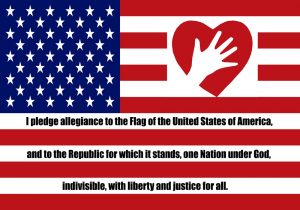
Pledge of Allegiance. Click for 8.5 x 11 printing. Also available in mini-poster print HERE.
United States Flag – The flag of the United States is commonly known as the “Stars and Stripes” or “Old Glory.” On June 14, 1777, the Continental Congress adopted a resolution stating: “Resolved, That the flag of the United States be thirteen stripes, alternate red and white; that the union is thirteen stars, white in a blue field, representing a new Constellation.” It is unknown whether Betsy Ross sewed the first flag created under this resolution; many historians view this story as a myth. The current 50-star flag is the 27th edition of the flag and has been used the longest since 1960. In 1818, Congress passed a law stating that a new star would be added for each new state; the 13 stripes would remain constant to represent the 13 colonies.
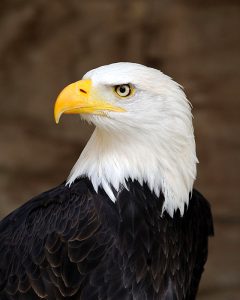
The bald eagle is the national bird of the United States and can be found in all of the contiguous United States and Alaska. Photo by Saffron Blaze.
National Bird – Bald Eagle – The bald eagle has long been the national bird of the United States. In 1782, the Continental Congress adopted the Great Seal of the United States, which depicts a bald eagle holding 13 olive branches in one talon and 13 arrows in the other. The olive branch represents the power to make peace, while the arrows represent the power to make war. The bald eagle was chosen because of its long life, great strength, and majestic looks and because it was believed to exist only on this continent then.
National Mammal – North American Bison – The bison, like the bald eagle, has been a symbol of America for its strength, endurance, and dignity, reflecting the pioneer spirit of our country. The bison was officially made the National Mammal in May 2016 and designated during a November ceremony at Wind Cave National Park in South Dakota. Tens of millions of bison, also known as buffalo, once thundered across a range stretching from central Canada through the Great Plains and northern Mexico. After a century-long slaughter driven by commercial hunting for buffalo pelts, the population dwindled to a thousand or fewer by the late 1800s. However, about 30,000 wild bison roam the country again, with the largest population in Yellowstone National Park. They can also be found scattered in public, tribal, and private lands in the U.S. and Canada.
The Liberty Bell – When the Pennsylvania colony’s leaders wanted a bell for its state house (now known as Independence Hall) that could be heard around the city, the Liberty Bell was commissioned in 1752. One side of the bell has a biblical quote: “Proclaim LIBERTY throughout all the land unto all the inhabitants thereof.” The most notable feature of the bell is a crack in the metal that runs up from the bell’s lip. Although there is no proof, many people believe that the Liberty Bell was rung to mark the reading of the Declaration of Independence on July 8, 1776. In the 1830s, abolitionists adopted the bell as a symbol of their struggle to abolish slavery; they popularized the name the Liberty Bell. Between 1885 and 1915, the bell traveled around the country for exhibitions and patriotic events. The bell currently resides in the Liberty Bell Center in Philadelphia’s Independence Mall. The bell’s crack is the source of many stories that have reached nearly mythic proportions; the crack’s appearance may have added to the bell’s symbolic power.
The National Anthem – “The Star-Spangled Banner,” has a colorful history. Francis Scott Key wrote the lyrics to the anthem as a poem in 1814, after he witnessed the British Navy bombarding ships during the Battle of Fort McHenry in Baltimore, Maryland, during the War of 1812. The melody was “borrowed” from the tune of a popular British song. The song became the official national anthem in 1931, replacing several other songs commonly sung at public events. The anthem is somewhat controversial because of its war-related imagery and the music’s challenge to singers.
National Motto – In God We Trust – In 1956, President Dwight Eisenhower approved a Joint Resolution of the 84th Congress declaring “In God We Trust” as the official national motto of the United States of America. This motto supplanted “E Pluribus Unum,” which had been used since the initial 1776 design of the Great Seal of the United States. The motto first appeared on the 1864 two-cent coin.
Great Seal of the United States – This seal, established in 1782, is used to authenticate certain documents such as foreign treaties and presidential proclamations. The symbols on the seal reflect the beliefs and values that the Founding Fathers wanted to pass on to their descendants. In the center of the seal is our national bird — the bald eagle that holds a scroll in its beak inscribed with our original national motto: “E Pluribus Unum,” Latin for “one from many,” representing a nation created from 13 colonies. The eagle grasps an olive branch in its right talon and a bundle of thirteen arrows in its left, representing the power of peace and war. The reverse side of the Great Seal depicts the national coat of arms used on numerous documents, including United States passports, military insignia, embassy placards, and various flags. The coat of arms includes a 13-step pyramid with the year 1776 in Roman numerals, an eye at the top of a pyramid with the Latin motto “Annuit Coeptis,” which means “He favors our undertakings.” Below the pyramid, a scroll reads “Novus Ordo Seclorum,” Latin for “New Order of the Ages,” referring to 1776 as the beginning of the American new era.
Uncle Sam – With the initials “U.S,” Uncle Sam is a common national personification of the U.S. federal government or the country in general that, according to legend, came into use during the War of 1812. The name is linked to Samuel Wilson, a meat packer from Troy, New York, who supplied barrels of beef to the United States Army during the War of 1812. He is portrayed as an older, bearded man dressed in clothes that evoke the U.S. flag. While the figure of Uncle Sam specifically represents the government, Columbia represents the United States as a nation.
National Tree – Oak Tree – The mighty oak tree was designated as the official national tree of the United States of America in 2004. With more than 60 species of oak growing in the United States, it is cherished for its beauty, abundant shade, and top-quality lumber. One U.S. senator said: “It is a fine choice to represent our nation’s strength, as it grows from just an acorn into a powerful entity whose many branches continue to strengthen and reach skyward with every passing year.”
The Statue of Liberty – With the formal title of “Liberty Enlightening the World, the statue was a gift to the United States from the people of France. Dedicated in 1886, the statue shows Libertas, the Roman goddess of freedom. Located in New York Harbor, the statue holds a torch in one hand and a tablet representing the law in the other. The date of the Declaration of Independence is inscribed on the tablet. A broken chain sits at Libertas’s feet. The statue is an iconic symbol of freedom. Protestors worldwide have used the statue’s image in their struggles for political freedom. Today, the neoclassical sculpture on Liberty Island is part of the Statue of Liberty National Monument and is a significant tourist attraction.
National Flower – Rose – The rose was designated as the official flower and floral emblem of the United States of America in 1986. The rose grows naturally throughout North America, blooming in several colors, including red, pink, white, or yellow, and can have a wonderfully rich aroma. The rose is a symbol of love, beauty, war, and politics all over the world. Several of the 50 states have also adopted the rose as their official state flower, including New York, Oklahoma, Georgia, Iowa, and North Dakota.
Compiled and edited by Kathy Alexander/Legends of America, updated February 2024.
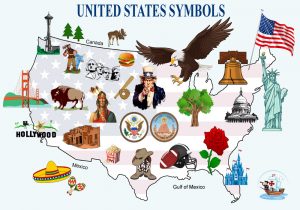
United States Symbols. Click for 8.5 x 11 printing. Click HERE for mini-poster print.
Also See:
The United States Flag – History & Facts
United States Trivia, Fun Facts, and Firsts
Sources:

